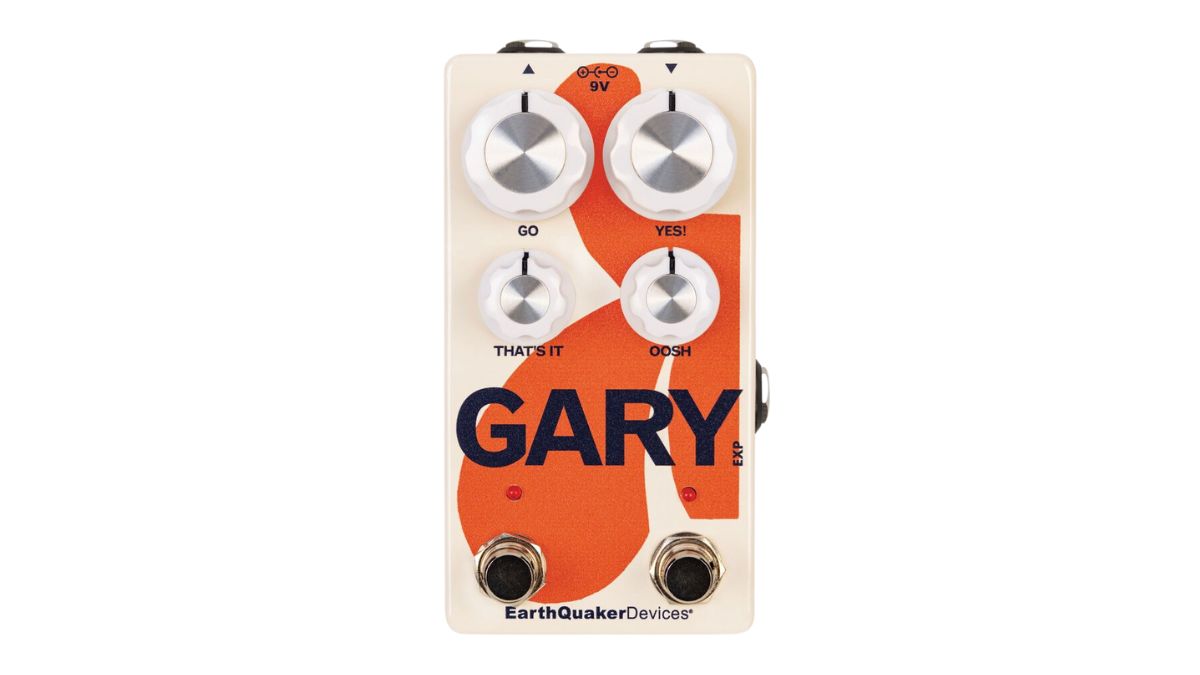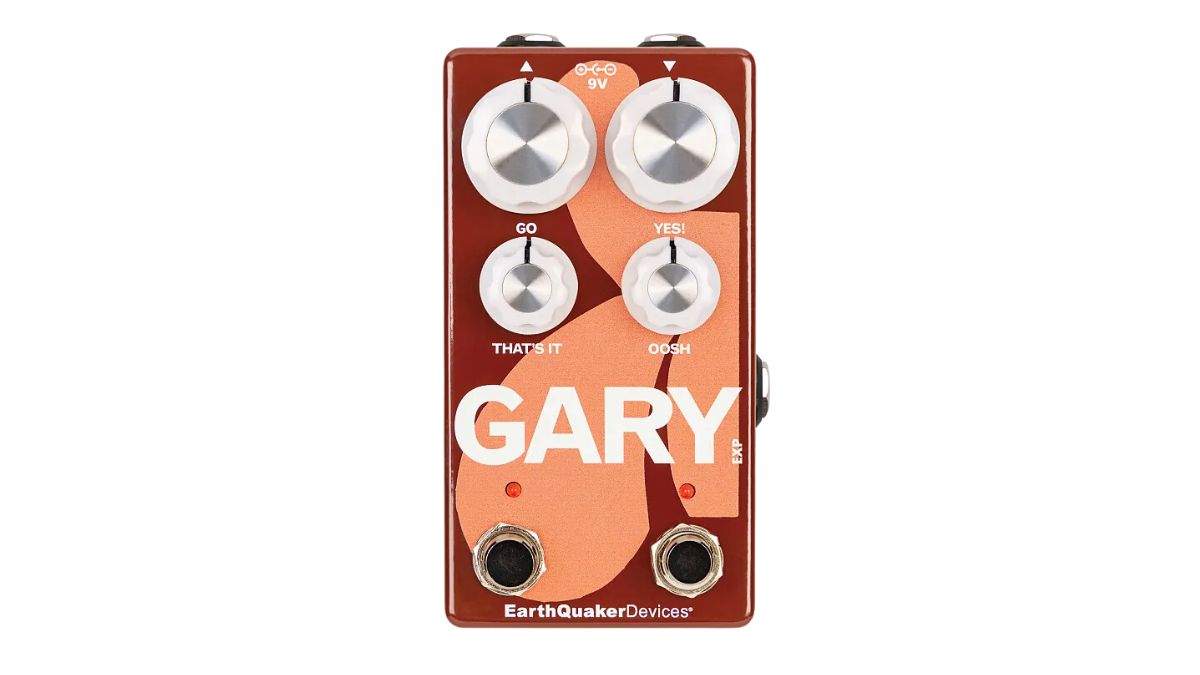“A domineering and interactive fuzz and natural overdrive with a dark side”: IDLES' Lee Kiernan encourages EarthQuaker Devices to revive its Gray Channel overdrive and fuzz pedal for his signature stompbox, Gary
The two-sided pedal brings back a stompbox loved by many, and ensures it comes back with an evil streak

EarthQuaker Devices and IDLES guitarist Lee Kiernan have collaborated on a new pedal, Gary, which they reckon is about to become “your new best bud.”
Gary is a more compact take on EQD’s discontinued Gray Channel overdrive pedal that can be found on the pedalboards of DIIV and Portugal. The Man.
It’s also been a mainstay on Kiernan’s ‘board, but EQD says he asked the pedal makers to “explore the pedal’s dark side a little more.” That’s resulted in a pedal boasting a “dynamic and destructive pulse width modulated fuzz paired with a natural-sounding op-amp overdrive.”
Like the Gray Channel, Gary is a twofer, with a “domineering and interactive” fuzz pedal on one side of its brain, and a “softer, natural sounding overdrive” on the other.
Aesthetic seriousness looks to be down the collaboration's list of priorities, with its dials consisting of Go, Yes!, That's It, and Oosh. But there is method in such madness.
Beneath them are two footswitches for engaging the two sides of the pedal, respectively, with That's It and Oosh providing Master Volume tweaking for the overdrive and fuzz respectively.
The overdrive side of the pedal draws its tonal cues from its yellow “signal shredder” Plumes overdrive pedal – now available in bass drive form. Kiernan often uses this mode with the clipping set to the middle position, removing all diodes from the circuit for a “full-bodied, cutting opamp distortion with plenty of volume on tap.”
Get The Pick Newsletter
All the latest guitar news, interviews, lessons, reviews, deals and more, direct to your inbox!
Messing with the Go dial sets the opamp drive, going from a simple clean boost up to a smooth distortion, and can be used with the That’s It Master Volume for greater flavor-making with the drive.
The fuzz features an envelope-controlled variable pulse width and volume akin to several sticks of dynamite. It can mutate the guitar signal into a square wave, and “allows you to dynamically adjust the duty cycle with pick attack.”
Here, the Yes! dial adjusts the sensitivity of the envelope to offer “sustain for days” or die as soon as you stop playing, with the pulse width narrowing the more it's cranked.
“With proper playing dynamics,” says EQD, “this creates a very cool effect that can sound like an exploding amp coming in and out of life, blown through a phase shifter.”
It sucks up the standard 9V of power, but cannot take batteries, meaning power supplies are your best friend here. The pedal also offers true bypass switching.
Holding the footswitch down also engages momentary operation, keeping the pedal's magic alive for as long as it's pressed down.


Gary features top-mounted jacks, with an additional output jack to hook up to expression pedals on the side. This affects the Yes! control of the fuzz and the peak of its sweep.
It can also be used and abused by bass players. Here, EQD says it’s at its best when placed at the front of the signal chain.
Gary is available in the standard Orange and Cream colorway for $199, or in a limited-edition Red and Brown drip via the EQD Reverb Shop. for the same price.
Visit EQD to learn more.
A freelance writer with a penchant for music that gets weird, Phil is a regular contributor to Prog, Guitar World, and Total Guitar magazines and is especially keen on shining a light on unknown artists. Outside of the journalism realm, you can find him writing angular riffs in progressive metal band, Prognosis, in which he slings an 8-string Strandberg Boden Original, churning that low string through a variety of tunings. He's also a published author and is currently penning his debut novel which chucks fantasy, mythology and humanity into a great big melting pot.
“Our answer to everything players have asked for and more”: Neural DSP’s Nano Cortex had one major drawback – but now it’s been addressed with a huge free firmware update that takes on Kemper and TONEX
"The ability to use this as a midweight MIDI brain for a gigging setup is what makes it unique.": Walrus Audio Canvas Clock review











